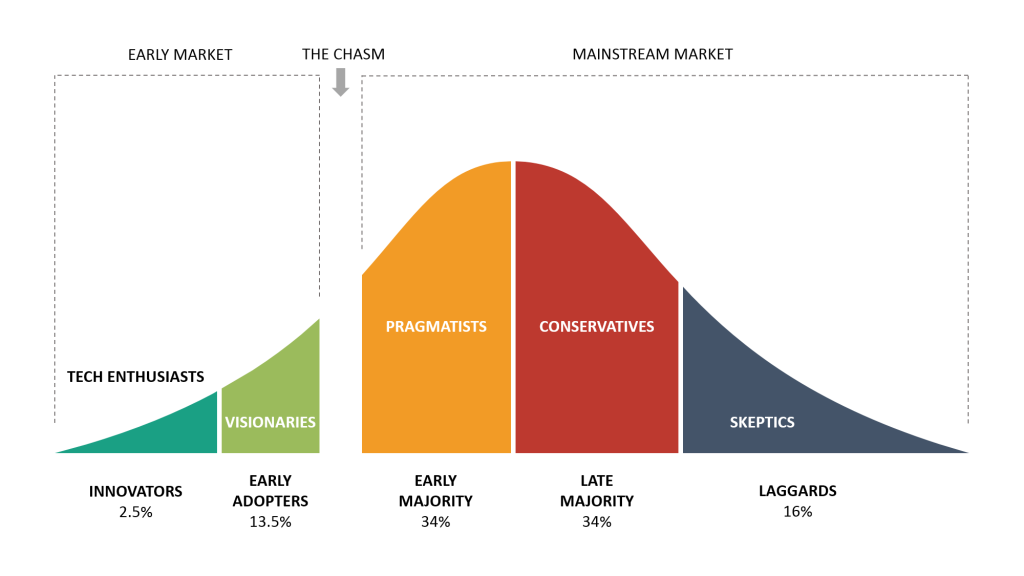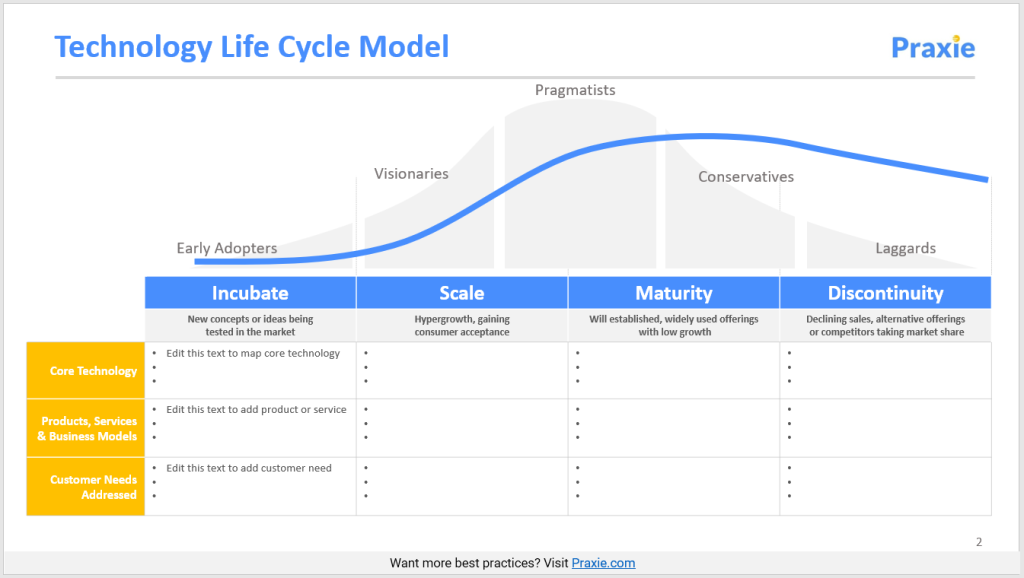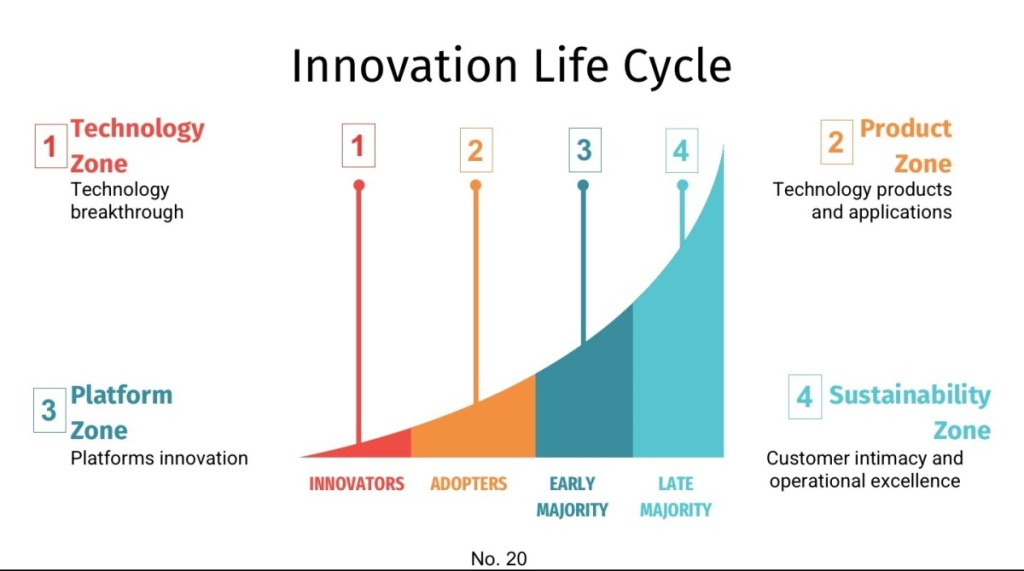Revolutionizing The Technology Innovation Lifecycle: Ignite Progress With A Single Click
Understanding the Technology Innovation Lifecycle
Greetings, Readers! Today, we will delve into the fascinating world of technology innovation lifecycle. In this article, we will explore the various stages involved in the lifecycle of a technological innovation and discuss its significance in today’s rapidly evolving world. So, buckle up and let’s embark on this journey of discovery together!
Introduction
The technology innovation lifecycle refers to the process through which a new technology is developed, adopted, and eventually becomes obsolete. It encompasses the entire lifespan of a technological innovation, from its inception to its eventual decline. By understanding this lifecycle, businesses and individuals can effectively navigate the ever-changing technological landscape and make informed decisions about investment and implementation.
3 Picture Gallery: Revolutionizing The Technology Innovation Lifecycle: Ignite Progress With A Single Click



In this article, we will explore the key stages of the technology innovation lifecycle, namely the what, who, when, where, why, and how. Additionally, we will discuss the advantages and disadvantages of this lifecycle, as well as answer some frequently asked questions. So, without further ado, let’s dive in!
What is the Technology Innovation Lifecycle?
The technology innovation lifecycle is a model that describes the progression of a technological innovation from its introduction to its eventual decline. It consists of several distinct stages, each with its own characteristics and challenges. These stages include the introduction, growth, maturity, saturation, decline, and obsolescence.
During the introduction stage, a new technology is introduced to the market. It is often met with skepticism and uncertainty, as its potential benefits and drawbacks are not yet fully understood. However, early adopters and innovators recognize its potential and start experimenting with its applications.

Image Source: i0.wp.com
The growth stage is characterized by an increase in adoption and market penetration. As the technology becomes more widely known and understood, more organizations and individuals begin adopting it. This leads to an exponential growth in demand and innovation, as companies strive to capitalize on the emerging market.
In the maturity stage, the technology reaches its peak adoption and market saturation. It becomes a standard tool or practice in the industry, and competition intensifies. At this stage, incremental improvements and optimizations become the focus, as companies aim to differentiate themselves from their competitors.
As the market becomes saturated, the technology enters the saturation stage. The demand plateaus, and growth slows down. This is often accompanied by price wars and increased competition, as companies struggle to maintain their market share.
Eventually, the technology enters the decline stage. This can be due to various factors, such as the emergence of a newer and more advanced technology, changing consumer preferences, or market saturation. At this stage, companies must decide whether to invest in revitalizing the technology or shift their focus to newer innovations.
Finally, the technology reaches the obsolescence stage, where it becomes outdated and irrelevant. It is replaced by newer and more efficient technologies, rendering it obsolete. However, it is important to note that obsolescence does not imply that the technology no longer serves a purpose. It simply means that it has been surpassed by newer innovations.
Who is Involved in the Technology Innovation Lifecycle?

Image Source: praxie.com
The technology innovation lifecycle involves various stakeholders, each playing a crucial role in its progression. These stakeholders include innovators, early adopters, early majority, late majority, and laggards.
Innovators are the first to embrace a new technology. They are driven by a passion for innovation and are willing to take risks. Innovators often serve as the catalysts for change and help refine and improve the technology.
Early adopters are the second group to adopt a new technology. They are typically opinion leaders and influencers within their respective industries. Early adopters provide valuable feedback and help establish the technology as a viable solution.
The early majority represents the bulk of the market. They are more cautious and pragmatic in their approach to technology adoption. The early majority ensures the widespread adoption and market acceptance of the technology.
The late majority consists of those who are skeptical and resistant to change. They adopt the technology only when it becomes a necessity or a standard practice in the industry. Their adoption is often driven by external pressures and market forces.

Image Source: wordpress.com
Laggards are the last to adopt a new technology. They are typically resistant to change and prefer to stick with traditional practices. Laggards often face difficulties in adapting to new technologies and may eventually become obsolete themselves.
When and Where Does the Technology Innovation Lifecycle Occur?
The technology innovation lifecycle occurs in various industries and sectors across the globe. It is not limited to a specific time or location. Technological innovations can emerge at any time and in any place, driven by advancements in science, engineering, and creativity.
However, it is important to note that the pace of the technology innovation lifecycle varies across industries. Some industries, such as consumer electronics and software development, experience rapid cycles of innovation and obsolescence. On the other hand, industries like healthcare and transportation may have longer lifecycles due to regulatory and safety considerations.
Why is the Technology Innovation Lifecycle Important?
The technology innovation lifecycle is of paramount importance in today’s digital age. It allows businesses and individuals to stay ahead of the curve and remain competitive in a rapidly evolving world. By understanding the stages of the lifecycle, organizations can make informed decisions about investing in new technologies, adapting their strategies, and capitalizing on emerging opportunities.
Additionally, the technology innovation lifecycle helps identify potential risks and challenges. It allows businesses to anticipate market trends, assess the viability of new technologies, and mitigate potential risks associated with obsolescence.
How Does the Technology Innovation Lifecycle Impact Businesses and Individuals?
The technology innovation lifecycle has a profound impact on both businesses and individuals. For businesses, it presents both opportunities and challenges. By embracing and harnessing new technologies, businesses can gain a competitive edge, improve efficiency, and enhance their products and services. However, failure to adapt to changing technologies can result in decreased market share, loss of relevance, and ultimately, failure.
For individuals, the technology innovation lifecycle offers new possibilities and conveniences. It has revolutionized various aspects of our lives, from communication and entertainment to healthcare and transportation. However, it also raises concerns about privacy, job security, and societal implications.
Advantages and Disadvantages of the Technology Innovation Lifecycle
Like any other process, the technology innovation lifecycle has its advantages and disadvantages. Let’s explore some of the pros and cons:
Advantages:
1. Innovation: The technology innovation lifecycle drives constant innovation, leading to the development of new and improved products and services.
2. Economic growth: Technological advancements stimulate economic growth by creating new industries, generating employment opportunities, and boosting productivity.
3. Efficiency: New technologies often improve efficiency and streamline processes, resulting in cost savings and increased competitiveness.
4. Improved quality of life: Technological innovations have the potential to enhance our quality of life, providing us with better healthcare, communication, and entertainment options.
5. Global connectivity: The technology innovation lifecycle has facilitated global connectivity, allowing people from different parts of the world to connect, collaborate, and share information.
Disadvantages:
1. Inequality: The rapid pace of technological innovation can exacerbate societal inequalities, creating a digital divide between the haves and have-nots.
2. Job displacement: As technology advances, certain jobs become obsolete, leading to job displacement and unemployment.
3. Security risks: New technologies bring new security risks and vulnerabilities, exposing individuals and organizations to cyber threats and data breaches.
4. Ethical dilemmas: Technological advancements raise ethical dilemmas, such as privacy concerns, AI ethics, and the impact on personal relationships.
5. Environmental impact: The production and disposal of technology can have a significant environmental impact, contributing to pollution, resource depletion, and electronic waste.
Frequently Asked Questions (FAQ)
1. What are some successful examples of technological innovations?
Some successful examples of technological innovations include the smartphone, electric vehicles, cloud computing, artificial intelligence, and renewable energy technologies.
2. How long does a technology typically stay in the market?
The lifespan of a technology in the market can vary significantly. Some technologies become obsolete within a few years, while others may remain relevant for several decades.
3. How can businesses stay competitive in a rapidly evolving technological landscape?
Businesses can stay competitive by staying informed about emerging technologies, fostering a culture of innovation, embracing digital transformation, and continuously adapting their strategies and operations.
4. What are the potential risks of investing in new technologies?
Investing in new technologies carries certain risks, including financial losses if the technology fails to gain market acceptance, integration challenges, and potential disruption to existing business models.
5. How can individuals keep up with the pace of technological advancements?
Individuals can keep up with the pace of technological advancements by seeking continuous learning opportunities, staying updated with industry trends, and actively engaging with technology through experimentation and exploration.
Conclusion
In conclusion, the technology innovation lifecycle is a dynamic process that shapes the technological landscape we live in. It is essential for businesses and individuals to understand and adapt to this lifecycle to stay relevant and competitive. By embracing new technologies, anticipating market trends, and addressing potential risks, we can navigate the ever-changing world of technology with confidence and drive meaningful progress.
Final Remarks
Technology is an ever-evolving field, and the innovation lifecycle is a continuous journey of discovery and progress. It is important to approach technological advancements with a critical and ethical mindset, considering their impact on society, economy, and the environment. As we embark on this journey, let us embrace innovation, harness its potential, and work towards a future where technology serves the greater good.
This post topic: Technology Innovation


